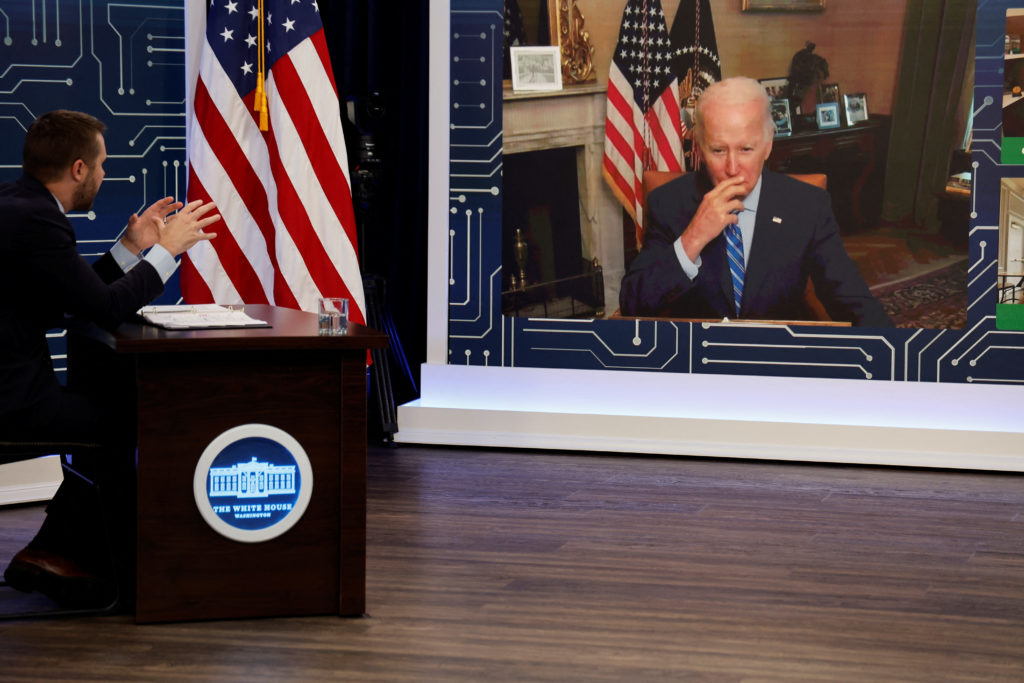Intel (INTC) CEO Pat Gelsinger has spent the last three years pressing Washington to make billions accessible to American chipmakers, and his efforts paid off on Wednesday with the announcement of up to $8.5 billion in US awards in the coming years.
It “will be the single biggest announcement of a grant to any chips recipient,” said Commerce Secretary Gina Raimondo in announcing the news.
The preliminary deal confirms Intel’s position as the focal point of President Joe Biden’s efforts to revive semiconductor production in the US. Intel claims the money will be used for a variety of new projects in Arizona, Ohio, New Mexico, and Oregon, totaling more than $100 billion in investments.
We’ve been the American advocate for semiconductors, so we’ve really taken it upon ourselves to move this legislation forward,” Gelsinger told reporters ahead of the announcement.
President Biden and Secretary Raimondo will accompany Gelsinger to the company’s site in Chandler, Arizona, on Wednesday to announce the announcement.
The development of the Arizona site will entail the building of two new cutting-edge fabrication units as well as the upgrading of an existing plant. According to the White House, it is the state’s greatest private-sector investment in history and will result in the creation of 3,000 permanent manufacturing jobs in the coming years.
Gelsinger took over as CEO of Intel in February 2021 and promptly communicated with Biden officials, who were also moving into their new headquarters around the same time.
He became a crucial public face of the administration’s early attempts to write and enact the CHIPS and Science Act.
He “invested 110% in the Washington side,” Bernstein Research’s Stacy Rasgon said in an interview this week.
Gelsinger “even kind of admitted that maybe he was neglecting his other duties to the extent of spending so much time in Washington,” the analyst continued, noting that the billions coming to Intel from Washington in the future years will be critical as the firm attempts to fulfil its lofty ambitions.
He returned to D.C. in March to sit in the First Lady’s box for the 2022 State of the Union speech.
During that address, Biden used Intel to try to push the CHIPs legislation, revealing that the company’s investment may increase with one huge caveat: “All they’re waiting for is for you to pass this bill,” he told the assembled lawmakers.
Gelsinger himself increased the pressure as discussions dragged on that year, stating in a well publicised tweet in July that the business would not begin big development in Ohio unless Congress acted.
The bill was eventually enacted and signed into law later that summer. Gelsinger, of course, was present.
Wednesday’s announcement also emphasises Arizona’s role as the primary location of Biden’s hoped-for rebirth in semiconductor production in the United States.
Taiwan Semiconductor Manufacturing business (TSM) is also working on a flagship fabrication factory in northern Phoenix, and the business expects to get its own government subsidy in the coming weeks.
On Tuesday, a senior government official attempted to maintain the spotlight on Intel’s announcement while still stating that “active discussions” with other big candidates, such as TSMC, were ongoing.
Arizona has been the focus of workforce difficulties, with legislators and industry leaders frequently concerned about having enough American workers to staff the new facilities in the coming years. TSMC has announced a delay of their Arizona plant’s full-scale debut from 2024 to 2025, citing workforce
The 19-month-old statute permits the White House to spend around $50 billion in taxpayer cash, $39 billion of which is explicitly designated for manufacturing, in order to assist revive American industry in the coming years.
The measure also includes a “advanced manufacturing investment credit” to encourage corporations to expand semiconductor production capacity in the United States, which might have a long-term impact.
Three smaller manufacturing deals had already been announced: around $35 million for BAE Systems (BAESY), $162 million for Microchip Technology, and $1.5 billion for GlobalFoundries (GFS).
Raimondo leads a team of approximately 200 persons tasked with enacting the law. She recently announced an ambitious new target of having the United States create 20% of the world’s most sophisticated semiconductor chips by the end of this decade.
“This announcement will put us on track to meet that goal,” stated Raimondo of Intel News.
Intel and Biden share an ambitious objective. According to the White House, the United States produced roughly 40% of the world’s chips in 1990, but less than 10% are manufactured there now.
The situation is considerably worse for more modern transistors, which are now made entirely in other countries, namely Taiwan.

